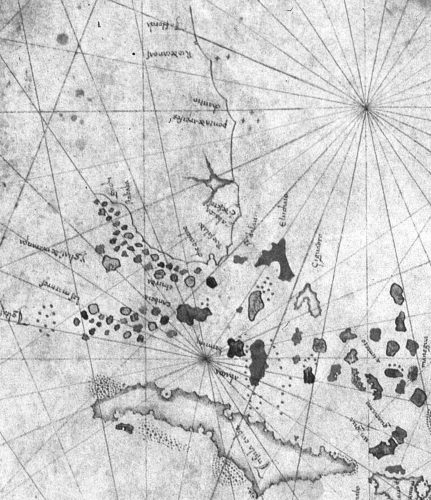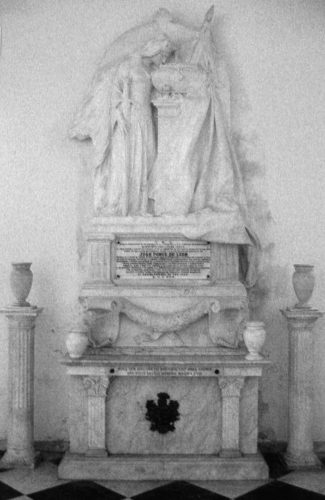The official discovery and naming of “La Florida” in 1513 by former Puerto Rican governor Juan Ponce de León marked only the beginning of Spanish visitation to Southwest Florida, and indeed the first decade after contact seems to have been a busy one.

Although he was named Adelantado of Florida in September of 1514, news of Ponce de León’s discovery seems to have spurred additional visits by other Spaniards.
In 1517, the returning expedition of Francisco Hernández de Cordoba visited the southern coastline of Florida in route to Cuba to take on fresh water following a disastrous battle in Yucatan where dozens of soldiers were killed and the expedition’s leader mortally wounded. Led by Ponce de León’s earlier pilot Antón de Alaminos, some 20 of the healthiest sailors went ashore somewhere in the vicinity of Ponce’s earlier expedition, finding fresh water in several holes they dug on a broad beach. As recounted later by Bernal Diaz del Castillo, almost immediately they were attacked by Indians, “who came straight at the Spaniards, shooting arrows at them, and with the surprise they wounded six, but they responded so quickly with the guns, crossbows, and swords that [the Indians] left them and went to help those who were in canoes who were attacking the rowboat and fighting with the soldiers.” Twenty- two Indian attackers were killed, and three wounded prisoners later died on the ships in route to Havana. Hernández de Cordoba himself died only days later in central Cuba.
A royal order issued in Spain during that same month of July, 1517 provides additional insight into the attack against the Spanish sailors, because it reveals an ongoing lawsuit by Juan Ponce de León against Cuban governor Diego Velázquez for the illegal capture of 300 Florida Indian slaves for transport to Cuba. Ponce de León alleged that Velázquez had sponsored or permitted a slave raid into Florida, which, after 1514, should have been Ponce de León’s exclusive slaving territory.

Slaving of this sort is known to have occurred along the Atlantic and Gulf coasts of greater Spanish Florida during the era from 1514 and 1516, including documented expeditions by Diego de Miruelo and Pedro de Salazar. Hence it is entirely possible that the Indians were even more predis- posed to attack than was originally the case during Ponce de León’s 1513 voyage. It is no surprise, therefore, that Ponce’s ill-advised 1521 attempt to establish a colony along the coast of Southwest Florida ultimately resulted in his own mortal wound by a Calusa arrow, which led to his death in Havana and subsequent burial in San Juan. The Calusa executed many more Spanish shipwreck survivors than they ever assimilated during the 16th century. If slaving were the norm for early Spanish contact in the first years after Ponce de León’s discovery, then it is no wonder that the Calusa were hostile towards Europeans.
This article was taken from the Friends of the Randell Research Center Newsletter Vol 5, No. 4. December 2006.